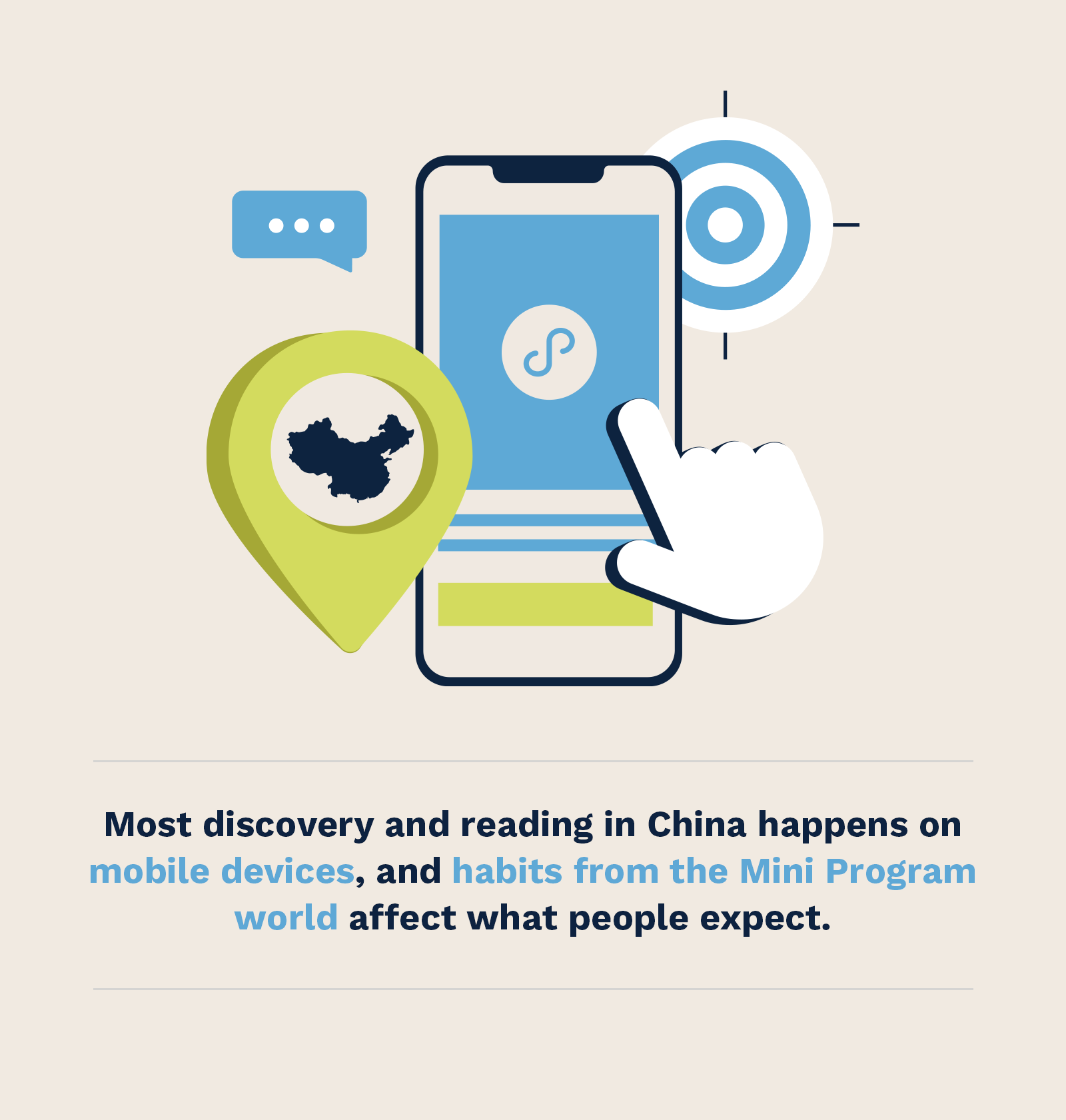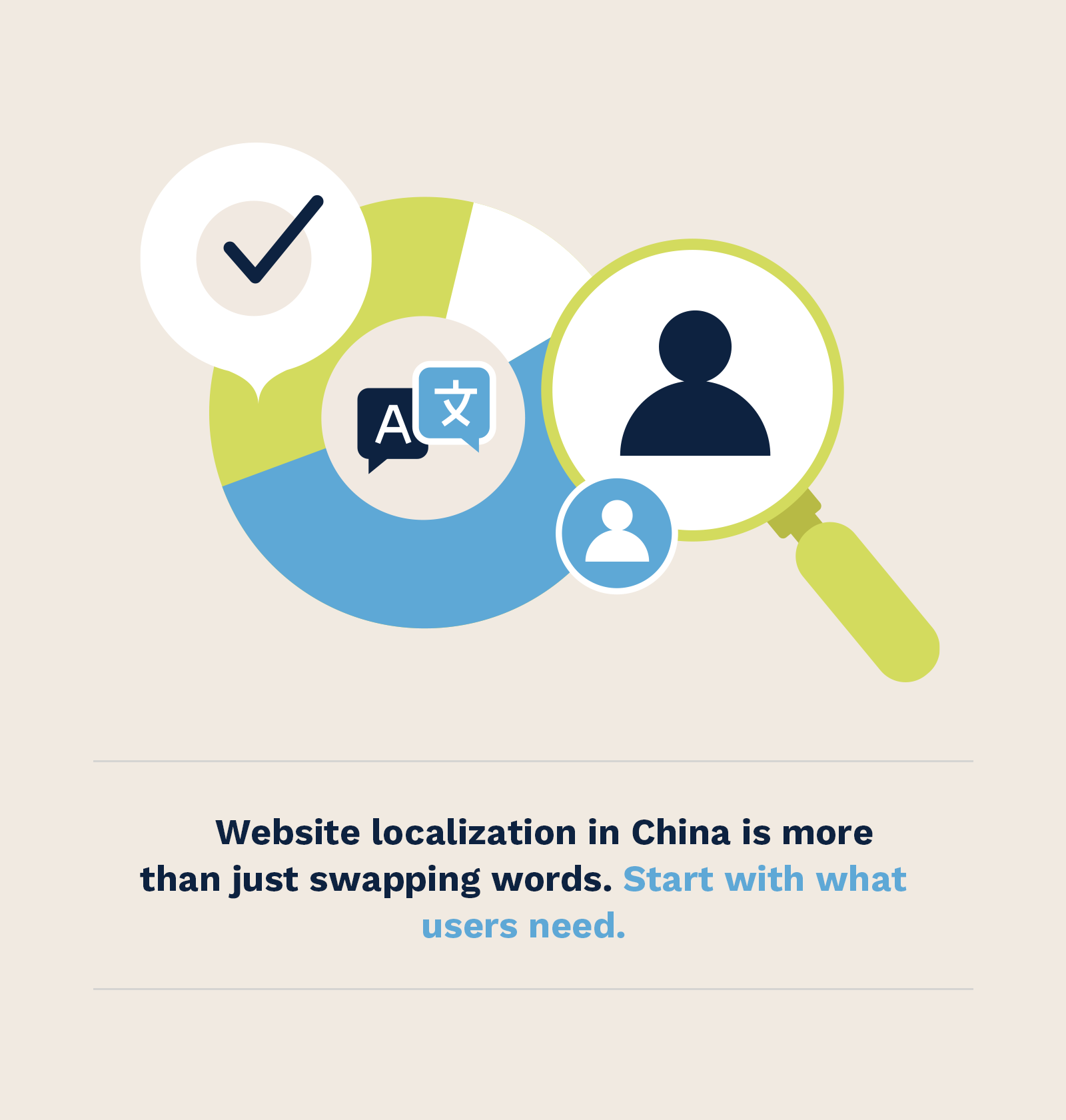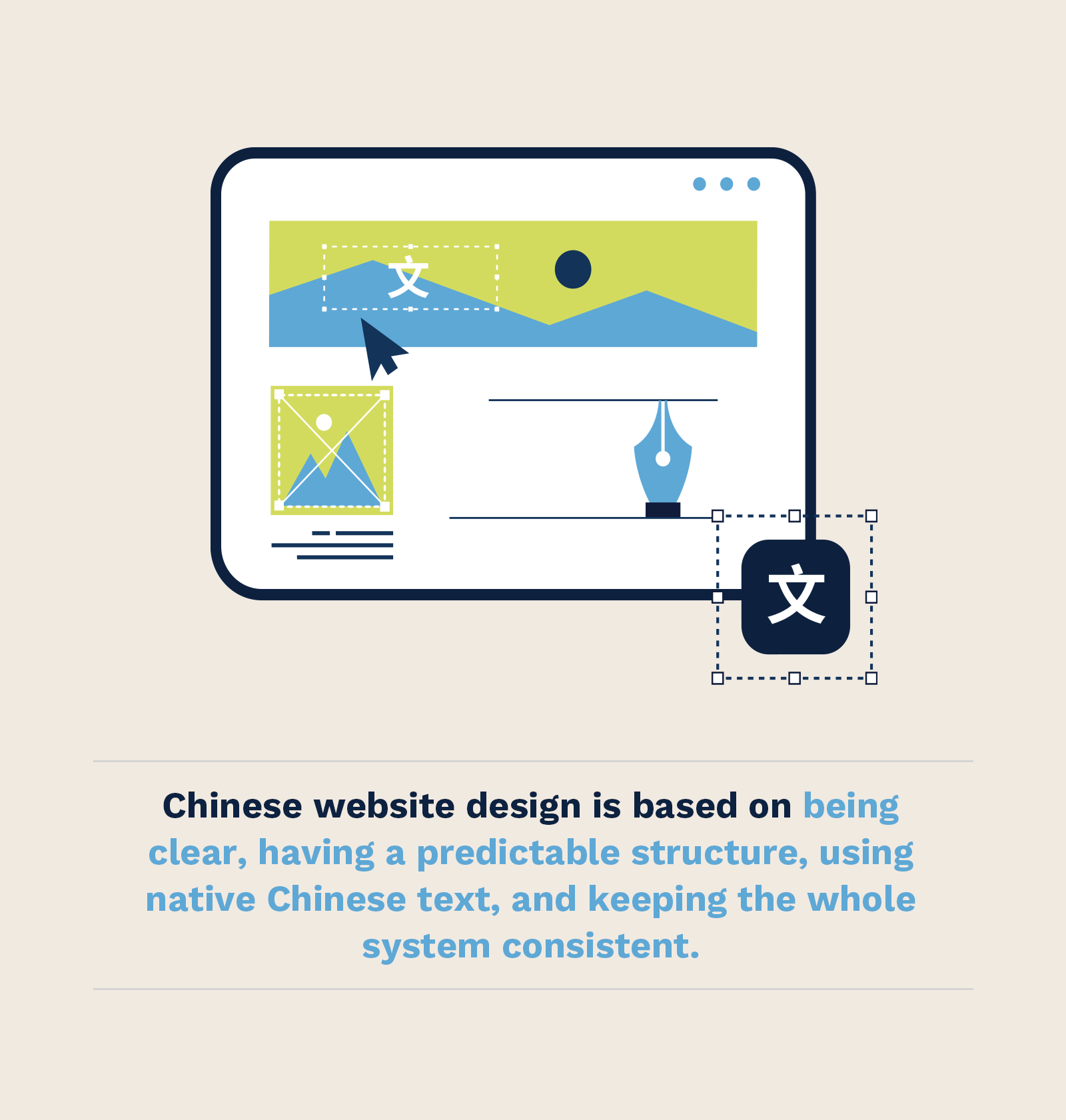

Your first impression in China starts with the page people land on. A site that feels native in language, layout, and flow builds trust fast and removes friction before any sales conversation begins. Chinese website design rewards clarity in navigation, precise Chinese copy that puts the user first, and consistent behavior across all pages and states. It also searches for mobile-friendly patterns that are common in the local ecosystem and prefers pages that match Baidu’s quality standards. When these elements work together, brands move from translation to real localization and get attention in a crowded market.
Clear navigation in China website design
People should be able to see where they are, what comes next, and how to get back without hesitation. Keep primary categories focused and easy to scan in Chinese, avoid multi-row menus, and make labels short so that eyes can move from left to right without stopping on long phrases. Make sure that styles are the same on all pages so that users don’t have to learn the interface over and over again. This procedure makes it easier for the user’s brain to work because it lowers mental effort and keeps attention on the content.
Say it simply in Chinese
Interface copy is part of your website design plan. If you want to write in a way that is easy for people to understand, you should write from the user’s perspective and put the main benefit in the most visible area. Use clear text in forms, confirmations, and error messages so people can finish what they came to do. Do not translate global slogans word-for-word if they lose meaning in the Chinese language. Be clear, helpful, and concise. That is what real website localization in China looks like.
Use a design system to stay consistent
Design systems used in China give clear rules for type, spacing, components, and feedback. When you follow one, you avoid one-off styling, which makes it easier for brand, product, and engineering teams to work together. You get a connected experience where headlines align, buttons behave consistently, grids repeat, and forms perform the way consumers expect. The outcome seems like it was made by hand instead of just put together, which is important when you enter a mature market like the one for web design in China.
Use page types people already know
Web design communities in China publish reusable enterprise templates that also fit corporate websites. These templates share a few common details. Product pages should have a clear claim at the top, followed by easy-to-scan modules for features, specs, proof, and calls to action. Documentation, pricing, and case studies should use predictable layouts so people know what to expect before they scroll. Standardized patterns reduce internal back-and-forth and make the experience easier to understand for new visitors.
Meet Baidu quality standards
Good experiences make you more visible. Baidu tells you what typical mistakes to avoid and penalizes pages that do not follow the rules. Do not use titles that do not match the content, intrusive overlays, thin or empty pages, messy layouts, or broken links. Use correct titles and summaries, keep URLs stable, fix broken links, and then submit them for cleanup through the platform tools. Think of these as the bare minimum. They match what users want, and they protect crawling and indexing at the same time.
Website design in China starts on mobile
Most discovery and reading in China happens on mobile devices, and habits from the Mini Program world affect what people expect, even when they are on the open web. In Chinese website design, keep navigation simple, make buttons and links large enough to tap, and show clearly what happens when people tap, when a page loads, when a step succeeds, or when a mistake occurs. During China web design reviews, use the official checklists to spot risky layouts so you can fix them before launch. These tips will make the experience feel comfortable to Chinese consumers, even if you’re not making a Mini Program and it’s just a website.

Make typography and layout scale
A modular approach to text and space helps teams move faster and keeps pages clean. Set clear sizes for Chinese text, keep spacing rules simple, and reuse parts instead of making a new version every time. It is not just about looks. It reduces visual noise, improves reading comfort, and makes each new page easier to create and maintain. In a market where enterprise design has set a high bar, consistency is a sign of quality.
Make content easy to find and use
People look quickly before they read everything. Use clear headings, keep sections in a sensible order, and make the main action easy to see. Labels should be short and clear, and there should not be too many similar buttons. When the structure is clear, visitors can quickly identify what they are looking for, which leads to more conversions. This applies to product pages, solution pages, and resource libraries. If you work with a Chinese web design company, ask them to apply these rules to every template and component.
Website localization in China starts with user needs
Website localization in China is more than just swapping words. Start with what users need. Write headlines and summaries that state the value in simple Chinese. Design forms to match local habits, and organize support pages by tasks people look for, such as buying, billing, returns, and technical help. Make the sections on legal issues and compliance easy to find and understand. Be sure that your contact methods match how people in China like to get in touch, not how your global template is set up.

Keep the site healthy after launch
Plan for regular checks. Check mobile adaptation, watch page speed and stability, and fix visual issues as soon as they appear. Keep content fresh where it matters most, from case studies to product updates, so search engines see a living site and users will perceive an active brand. Make these routines part of the design process, not added at the end. This is how website design in China stays stable after it goes live.
Chinese website design is based on being clear, having a predictable structure, using native Chinese text, and keeping the whole system consistent, while mobile patterns and Baidu quality serve as guidelines. Brands that follow these rules move faster, communicate better, and earn trust sooner. Start with a site that feels local to China, and everything else gets easier. Ready to build for China? Let’s make it feel local. Contact Flow Asia today.





